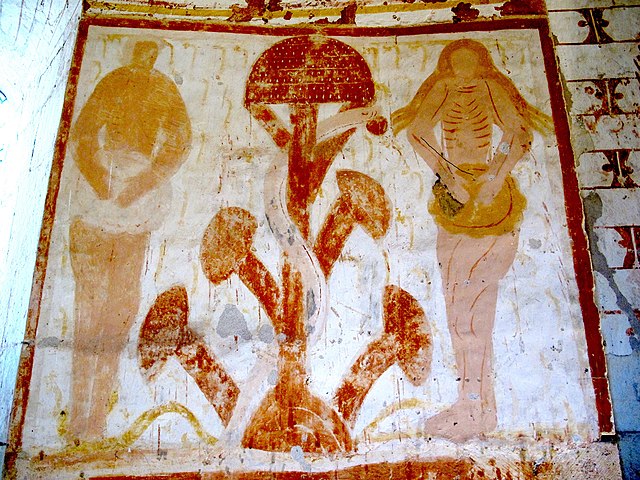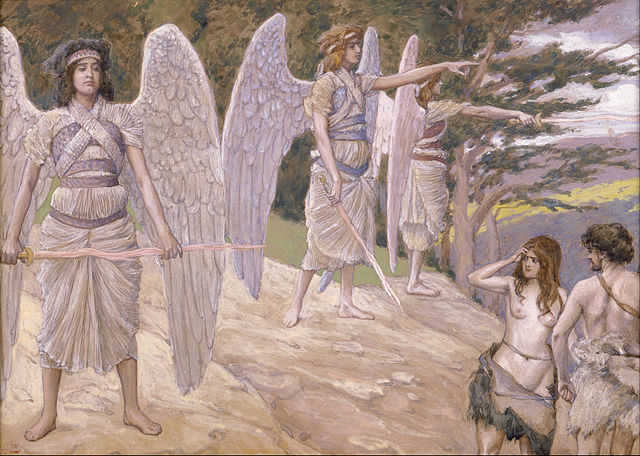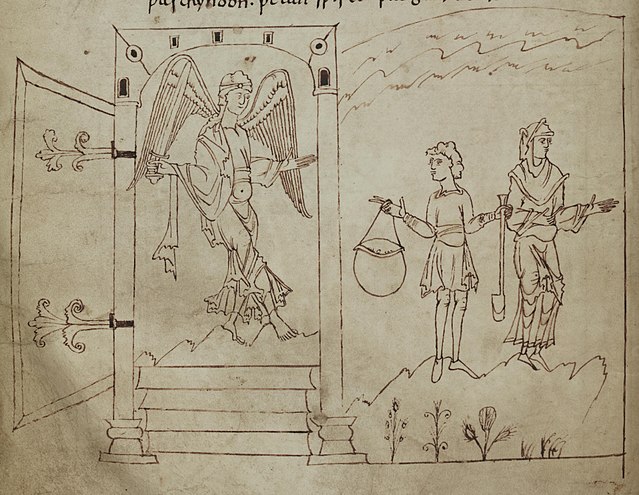In Jewish mythology, forbidden fruit is a name given to the fruit growing in the Garden of Eden which God commands mankind not to eat. In the biblical story, Adam and Eve eat the fruit from the tree of the knowledge of good and evil and are exiled from Eden:And the Lord God commanded the man, saying, Of every tree of the garden thou mayest freely eat:But of the tree of the knowledge of good and evil, thou shalt not eat of it: for in the day that thou eatest thereof thou shalt surely die.
Depiction of the original sin by Jan Brueghel de Oude and Peter Paul Rubens
Image: Plaincourault fresco, Garden of Eden
In Abrahamic religions, the Garden of Eden or Garden of God, also called the Terrestrial Paradise, is the biblical paradise described in Genesis 2–3 and Ezekiel 28 and 31.
The Garden of Eden with the Fall of Man by Jan Brueghel the Elder and Pieter Paul Rubens, c. 1615, depicting both domestic and exotic wild animals such as tigers, parrots, and ostriches co-existing in the garden
Expulsion from Paradise, painting by James Tissot (c. 1896–1902)
The Expulsion illustrated in the English Junius manuscript, c. 1000 CE
The Garden of Eden in the left panel of Bosch's The Garden of Earthly Delights





